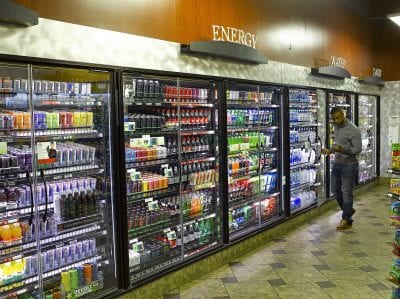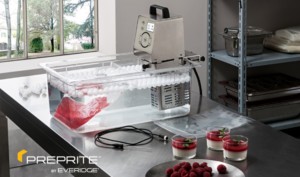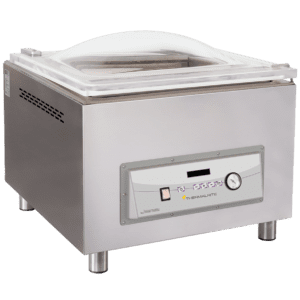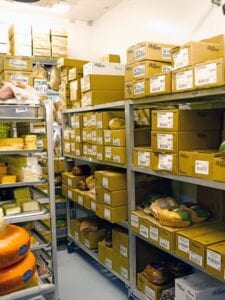How Everidge Refrigeration Systems Maintain Energy Efficiency

- August 7, 2018
The refrigeration industry can be notorious for using vast amounts of energy, making it costly for both your pocketbook and the environment. But at Everidge, energy efficiency is always a top concern as we strive to provide our customers with the highest-quality products for their needs. Here are a few ways we’ve made our refrigeration systems more effective while also maintaining energy efficiency, giving you the best return on your investment.
Electronic controllers
Our electronic controller is possibly the most crucial element of our energy-efficient system because of its defrost sensor. Walk-ins without this sensor are set on a clock to defrost at certain times, no matter what. Our electronic controller monitors the system, evaluates the evaporator coil and determines whether a defrost cycle is required. During low traffic hours, the defrost cycle may be skipped, deemed unnecessary as the conditions have not changed. High traffic hours may require more defrost cycles to keep room moisture in check and minimize ice buildup on the evaporator coil. This automatic sensing keeps your walk-in unit effective, defrost cycles shorter and system operations more efficient.
In addition to sensing the temperature and ice buildup, our electronic controller has the ability to assess for optimal refrigeration system conditions. For example, it will evaluate whether the evaporator fan is running at the correct time and whether it is a safe time to turn on the fans without blowing water around the box and contaminating any food.
Scroll compressors
Most of our refrigeration systems use scroll compressors. These are different from typical reciprocating compressors because they have no bearings nor moving parts other than a simple scroll. The scroll compressor achieves the same gas compression as typical compressors, but because there are not as many moving parts, they produce significantly less heat. Less heat means better energy efficiency and lower operating costs for our walk-in systems.
Refrigerants
Refrigerants are one of the most highly regulated aspects of a refrigeration system — as they should be. The most energy-efficient refrigerants out there are not necessarily the most environmentally friendly, so it’s important to maintain a balance. The refrigerants we use — R404A and R448A — are the most energy-efficient refrigerants for our applications and have a low global warming potential (GWP) and zero ozone depletion potential (ODP). We adhere to all federal standards, although they are ever-changing, and we meet all state energy codes — even California’s.
Partnership mindset
Although not technically a part of our refrigeration systems, our partnership mindset is how we stay ahead of the curve when it comes to technology and energy efficiency. We maintain constant contact with partners and suppliers to make sure we know about new innovative technologies and how they fit into the industry’s ever-changing landscape. We constantly evaluate our systems and listen to feedback from end users to ensure our products are working as intended.
On the regulatory side, we have an Everidge team dedicated to code compliance. We stay ahead of the curve by sitting on working groups with the Air-Conditioning, Heating and Refrigeration Institute (AHRI) that help develop energy-efficiency standards. We also receive advance notice of new rulings and regulations from the U.S. Environmental Protection Agency (EPA) and the U.S. Department of Energy (DOE) that keep us from backtracking on our engineering initiatives.
While energy efficiency can be a difficult goal to measure, we believe our refrigeration systems, combined with our walk-in cooler and freezer rooms, are the most energy-efficient option available on the market today. Our processes and commitment to excellence allow us to maintain that position, even in a rapidly changing and highly regulated industry.
Have specific questions about energy efficiency? Feel free to contact us.










